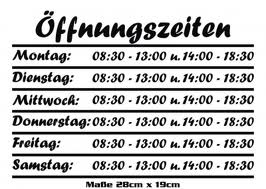Instructions for Kultur Assignments:
0. You will post your responses to the Kultur texts in Canvas Discussions.
1. For each chapter, there will be a list of roughly 4-6 short articles, videos, or links on topics related to the culture of the German-speaking countries. In addition, you will see the list of “Brennpunkt Kultur” boxes included in the chapter. Spend about 40-45 minutes watching the videos, and reading the articles and the Brennpunkt Kultur boxes. (Note: the Brennpunkt Kultur info will be tested on the chapter tests. The articles will not.)
2. Then spend about 15-20 minutes writing a post (in English, but include as much German as you like!) with your reactions to what you read, and maybe some favorite quotes. It’s great if you can include images, or links to other relevant articles, videos, or websites (some, or even most, of your post can be about these related materials, if they’re relevant).
3. There is no length requirement, but your post should give your instructor the impression that you spent the suggested length of time reading the articles and writing your post.
4. You should not have to subscribe to or pay for anything to see the articles and videos. Please let your instructor know if you have any access issues. In particular, for New York Times articles, an alternative link is provided to allow you to access the article via the UofM Library’s NYT subscription. Note that UofM students can currently register for free NYT subscriber access via CSG (Central Student Government): https://www.csg.umich.
| KAPITEL 7 | KAPITEL 8 | KAPITEL 9 | KAPITEL 10 | KAPITEL 11 |
Kapitel 7
- Easy German 342: German-Turkish life in Berlin
- OPTIONAL: Easy German 215: Discrimination in Germany
- OPTIONAL: Easy German 130: Integration in Germany Stop at 9:45!
- OPTIONAL: Easy Turkish 25: What do Turks think about Germans?
- Easy German: How Victims of National Socialism are commemorated in German Cities
- African diaspora adopts Berlin
- The Germany of 1892 was liberating for W.E.B. Du Bois. Many minorities don’t feel that today. If you don’t want to create an account on the Washington Post website in order to read the article, here is the UM Library link to “The Germany of 1892 was liberating for W.E.B. Du Bois. Many minorities don’t feel that today.” [you will be prompted to log in]. The UM Library version of the article does not includes the images from the original article.
- Germany. Why. Can’t. You. Queue. [Skip the “When I was a child” and “Queuing, at it’s very heart, is about fairness” paragraphs]
- Lesen Sie “Brennpunkt Kultur” in V: Seite 245 (“Studentenermäßigungen”), Seite 253 (“Einkaufen”), Seite 260 (“Stuttgart”), Seite 265 (“Fußball und Profi-Sport in Mitteleuropa”) und Seite 284 (“München”)
Kapitel 8
- Easy German 168: Student Life: Germany vs USA Stop at 10:10. A lot of emphasis on drinking towards the end, aber hoffentlich trotzdem interessant – hopefully nevertheless interesting 🙂
- OPTIONAL: Super Easy German 19: Typical classroom scenes in German Filmed at a high school in Poland. Focusses on language one might hear in a school classroom.
- Mother Tongue Lessons for Germany’s Polyglot Students
- Minorities In Germany Are Sounding Off Against Racism With #MeTwo Hashtag This article was written in 2018, when this hashtag was intiated.
- The Things Headscarves Reveal
- Draftophobia: Blown Away by the Fear of Air
- OPTIONAL BUT HIGHLY RECOMMENDED: 10 fun facts about health care in Germany: From home remedies to house doctors | Meet the Germans
- OPTIONAL BUT HIGHLY RECOMMENDED: You Have What? Mysterious Illness in Germany What is a Kreislaufzusammenbruch [literally: a collapse of the circulatory system]?
- Love Thy Neighbor: German Law Tells You How
- Lesen Sie “Brennpunkt Kultur” in V: Seite 295 (“Deutsche Hochschulen”), Seite 315 (“Der Weg zum Studium”), Seite 317 (“Wie Studierende ihr Studium finanzieren”) und Seite 327 (“Das Schulsystem”).
- OPTIONAL:
- #AuchIchBinDeutschland Anti-racist photo blog inspired by the #ITooAmHarvard campaign. The article shows ten sample images with brief explanations.
- Germany’s Sauna Obsession: Expose Yourself to the Culture
Kapitel 9
- Easy German: For this chapter, we are asking you to watch two videos:
- Super Easy German 118: Talking about Austria in slow Austrian German (3:43)
- AND: Easy German: Differences between Austrian German and German German Stop at 11:47.
- Not a “Kultur” video, but re: the difference between “hier” und “da” discussed in the video, you may enjoy this Sesamstraße discussion between Krümelmonster and Lulatsch (Cookie Monster and Herry Monster) 🙂
- OPTIONAL/FOR FUN: Christoph Waltz on the difference between Austrians and Germans Stop at 2:50.
- Turkish Guest Workers Transformed German Society
- Germans Warm Up To Immigration, But Miss the Point This article is from 2011, and remains relevant and interesting, but the statement near the end that “”There are strong right-wing movements across Europe, but not really in Germany where lingering racism has found no real political form” is unfortunately no longer true. The anti-immigrant AfD party has held seats in the Bundestag since 2017.
- By the Numbers: An Obsession With Statistics
- Germany’s Patriotism Problem: Just Don’t Fly the Flag This article is from 2006. Since then, a world-wide surge in right-wing populism and the rising popularity of the “AfD” party has also brought with it a surge of much more open patriotism and nationalism among right-wing voters. Nevertheless, the article describes a crucial aspect of German culture: the continuing emphasis on the memory of Nazi atrocities, and on understanding the lessons of that past. This has also led to a relative absence of ‘conventional’ patriotism. Even though very few people are still alive who have any direct responsibility for what happened, the millions of people who died in the Holocaust, and those who survived it, deserve to be remembered. This doesn’t mean that a German patriotism is not possible, but it has to include a consciousness of Germany’s historical responsibility. One approach that people have taken is ‘Verfassungspatriotismus’: a patriotism that takes pride in the German constitution as a document fundamentally dedicated to learning from Germany’s past.
- Lesen Sie “Brennpunkt Kultur” in V: Seite 346 (“Berufswahl und Berufsausbildung in deutschsprachigen Ländern”), Seite 353 (“Wien”), und Seite 365 (“Österreich”)
- OPTIONAL:
- Tourist sein in Wien: Besucher [=visitors] empfehlen [=recommend] diese Sehenswürdigkeiten
- This intentionally provocative article written by a German observer of the 2012 U.S. Presidential elections
Kapitel 10
- Easy German: For this chapter, we are asking you to watch two videos:
- Easy German 119: What do Germans think about Switzerland? Stop at 7:53!
- AND: Easy German: How similar are Swiss German and High German? Stop at 4:00!
- Loving the Spätkauf
- Sorry, We’re Closed: The Challenge of Spending Money in Germany
- For fun: Click here and do a search for “Sorry, we’re closed” on this page for a comment by comedian Mitch Hedberg on the topic of American “Sorry, we’re closed” signs.
- Cash: a German Love Affair [Artikel von 2019] If you have time, we highly recommend that you watch the video near the beginning of the article [4 Minuten]!
- “Dinner For Who?” Germany’s New Year “Procedure”
- Click here if you’d like to see the actual video (Hartmut, being a German, loves and highly recommends it…)! Click here to see the Wikipedia pages about the show, including a plot summary and some interesting background.
- Lesen Sie “Brennpunkt Kultur” in V: Seite 381 (“Die Brüder Grimm und ihre Kinder- und Hausmärchen”), Seite 390 (“Karneval, Fasching, Fastnacht”), Seite 403 (“Die Schweiz”) und Seite 405 (“Fest- und Feiertage”)
 |
OPTIONAL: Learn more about Switzerland on the wikitravel page for Switzerland OPTIONAL: Tons Of Guns, But No Mass Shootings: What We Can Learn From The Swiss [Ignore the last sentence/paragraph and draw your own conclusions!] OPTIONAL: Frohe Weihnachten: A Visit to Germany’s Christmas Markets OPTIONAL: Booze Brothers: Father’s Day Debauchery in Deutschland |
 |
Kapitel 11
- Easy German 321: Berlin 30 years after the fall of the wall
- The German Colonial Empire: How Does Germany Deal With Its Colonial History? | Meet the Germans
- NOTE: the video contains graphic images and descriptions of colonial violence, oppression and exploitation, particularly between the time stamps of 1:20 – 1:50, 5:10 – 5:40, and after 6:55. Please skip these parts of the video if you would prefer, or inform yourself about this topic via a different source, e.g. by skimming Wikipedia’s article on the German Colonial Empire. Texts and videos on this subject almost always include gruesome images and descriptions. Please take care of yourself in deciding what to watch/read, and please let us know if there are other parts (or aspects) of the video we should include in this note!
- Knowing Germany’s Remembrance Culture: as a foreigner If you have time, we highly recommend that you also click through the annotated photos of various memorials near the end of the article!
- ‘Race’ has no place in the German constitution – or does it?
- Die Zeit: A Nation Divided. You could also read this auf Deutsch: Das geteilte Land
- Backward Southerners, Frigid Northerners: Germany’s Real Divide OR Bavarian Millennials Embrace Tradition If you are blocked from reading this by the NYT paywall, here is the UM Library link to “Bavarian Millennials Embrace Tradition” [you will be prompted to log in].
- Lesen Sie “Brennpunkt Kultur” in V: Seite 458 (“Freistaat Sachsen: Leipzig und Dresden”)
- Reread [no need to include this in your post]: Spiegel: The Germans pp. 90-93: Timeline.
- Reread “Brennpunkt Kultur” in V [no need to include this in your post]: Seite 434 (“Deutschland: von der Monarchie zur Republik (I)”), Seite 444 (“Deutschland: von der Monarchie zur Republik (II)”), Seite 455 (“Deutschland: von der Monarchie zur Republik (III)”)
- OPTIONAL:
- 1989: How reunified Berlin birthed a club culture revolution
- Daniel Liebeskind on Berlin & German History This article is from 2006, i.e. before the emergence of the AfD as a political force.
- Berlin Wall Trail a surreal journey into city’s past




